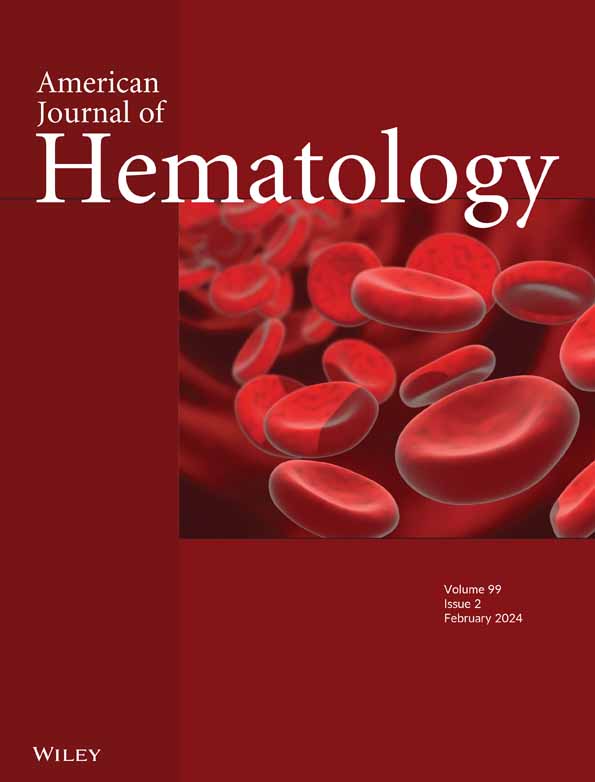特发性多中心Castleman病诊断标准的演变与最新进展
IF 9.9
1区 医学
Q1 HEMATOLOGY
引用次数: 0
摘要
特发性多中心Castleman病(iMCD)是一种罕见的细胞因子驱动的疾病,以全身炎症、器官功能障碍和淋巴结显微结构改变为特征。在过去的十年中,诊断标准发生了重大变化,整合了临床、组织病理学和分子生物标志物的进步。iMCD发病机制的关键驱动因素,如白细胞介素- 6失调和其他功能失调的细胞因子信号传导,已经被确定,并导致了靶向治疗的发展,如西妥昔单抗和托珠单抗。组织病理学的改进突出了不同的亚型,如血管增生、浆细胞增生和混合组织模式,而分子发现揭示了潜在的副肿瘤和克隆过程。包括单细胞测序、空间转录组学和数字病理学在内的新兴技术为提高诊断精度和推进个性化医疗提供了希望。这篇综述综合了iMCD诊断的历史框架、最新突破和未来方向,强调了多学科方法对改善患者预后的重要性。本文章由计算机程序翻译,如有差异,请以英文原文为准。
The Evolution and Recent Advances in Diagnostic Criteria for Idiopathic Multicentric Castleman Disease
Idiopathic multicentric Castleman disease (iMCD) is a rare cytokine‐driven disorder characterized by systemic inflammation, organ dysfunction, and altered lymph node microscopic architecture. Over the past decade, diagnostic criteria have evolved significantly, integrating clinical, histopathological, and molecular biomarker advancements. Key drivers of iMCD pathogenesis, such as interleukin‐6 dysregulation and other dysfunctional cytokine signaling, have been identified and led to the development of targeted therapies like siltuximab and tocilizumab. Histopathologic refinements have highlighted distinct subtypes, such as hypervascular, plasmacytic, and mixed histologic patterns, while molecular discoveries have unveiled potential paraneoplastic and clonal processes. Emerging technologies, including single‐cell sequencing, spatial transcriptomics, and digital pathology, offer promise in refining diagnostic precision and advancing personalized medicine. This review synthesizes historical frameworks, recent breakthroughs, and future directions in iMCD diagnostics, emphasizing the importance of multidisciplinary approaches for improved patient outcomes.
求助全文
通过发布文献求助,成功后即可免费获取论文全文。
去求助
来源期刊
CiteScore
15.70
自引率
3.90%
发文量
363
审稿时长
3-6 weeks
期刊介绍:
The American Journal of Hematology offers extensive coverage of experimental and clinical aspects of blood diseases in humans and animal models. The journal publishes original contributions in both non-malignant and malignant hematological diseases, encompassing clinical and basic studies in areas such as hemostasis, thrombosis, immunology, blood banking, and stem cell biology. Clinical translational reports highlighting innovative therapeutic approaches for the diagnosis and treatment of hematological diseases are actively encouraged.The American Journal of Hematology features regular original laboratory and clinical research articles, brief research reports, critical reviews, images in hematology, as well as letters and correspondence.

 求助内容:
求助内容: 应助结果提醒方式:
应助结果提醒方式:


